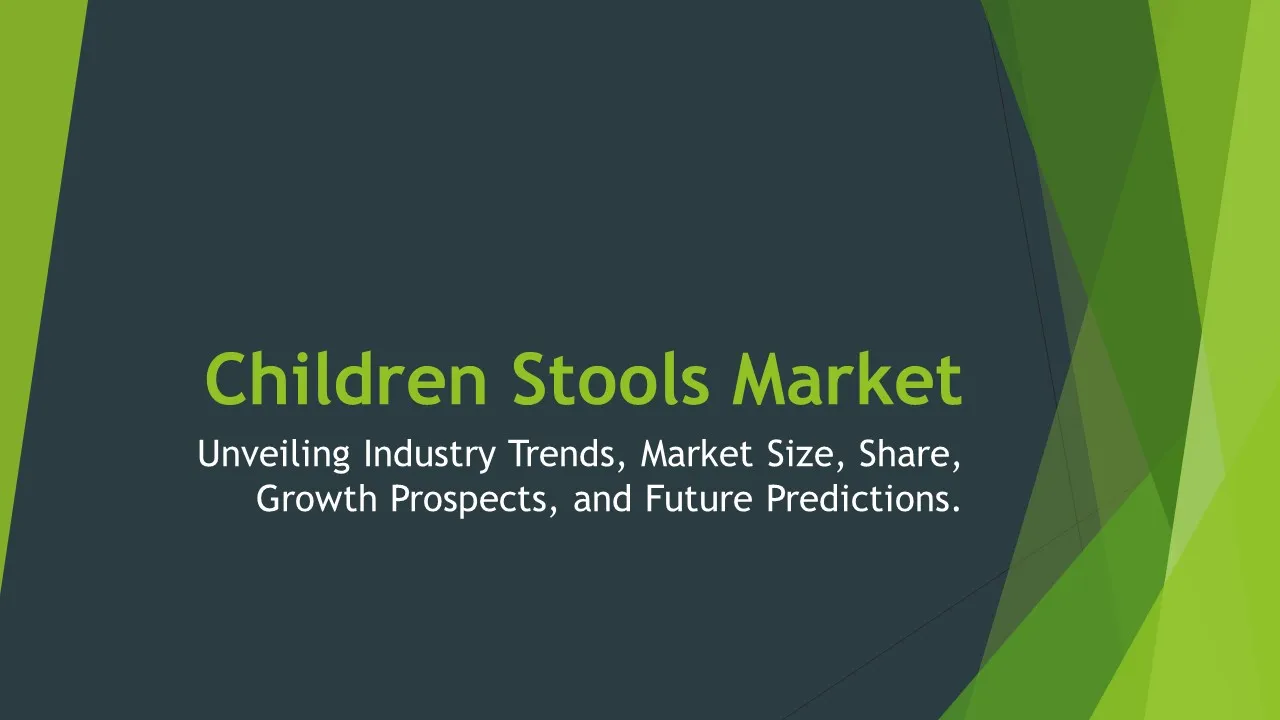Pastels
Pastels Market Segments - by Product Type (Soft Pastels, Oil Pastels, Pan Pastels, Pencil Pastels, Pastel Pencils), Application (Fine Arts, Crafts, Graphic Design, Home Decor, Fashion), Distribution Channel (Online Stores, Art Supply Stores, Supermarkets/Hypermarkets, Specialty Stores, Others), Ingredient Type (Kaolin, Gum Arabic, Pigment, Pumice, Talc), and Region (Asia Pacific, North America, Latin America, Europe, Middle East & Africa) - Global Industry Analysis, Growth, Share, Size, Trends, and Forecast 2025-2035
- Report Preview
- Table Of Content
- Segments
- Methodology
Pastels Market Outlook
The global pastels market is projected to reach approximately USD 3.2 billion by 2025, growing at a Compound Annual Growth Rate (CAGR) of 5.2% during the forecast period of 2025-2035. This growth is primarily driven by the increasing popularity of art and craft activities among all age groups, particularly among millennials and Gen Z consumers who are actively seeking creative outlets. The rise in art education programs in schools and communities, coupled with a growing trend towards DIY home decor, is further stimulating demand for pastels. Additionally, the expansion of online retail platforms has made it easier for consumers to access a wide range of pastel products, facilitating market growth. The increasing use of pastels in various applications, such as fine arts and graphic design, is also contributing to the upward trajectory of the market.
Growth Factor of the Market
Several factors are contributing to the growth of the pastels market on a global scale. Firstly, the broadening interest in art and creativity among younger generations has led to a surge in demand for pastel products. Many educational institutions have also integrated art into their curricula, further boosting the consumption of pastels. Secondly, the rise of social media platforms has fostered a vibrant community of artists and crafters who share their works and techniques, encouraging others to explore and engage with pastel art. Thirdly, the availability of high-quality pastel products through online platforms is making these products more accessible to consumers, driving sales. Furthermore, innovative product offerings and the introduction of eco-friendly and non-toxic pastels are attracting environmentally conscious consumers. Finally, the increasing trend of home decoration and personalization has created a robust demand for pastels in crafting and DIY projects.
Key Highlights of the Market
- The pastels market is expected to reach USD 3.2 billion by 2025, demonstrating strong growth potential.
- Online retail is becoming a dominant distribution channel, providing greater accessibility to consumers.
- A significant rise in art education programs is encouraging the use of pastels among students and hobbyists.
- Soft pastels are the most popular product type, favored for their versatility in various art forms.
- There is an increasing focus on sustainable and non-toxic ingredients in pastel production, aligning with consumer preferences.
By Product Type
Soft Pastels:
Soft pastels are characterized by their high pigment concentration and smooth texture, which allows for easy blending and layering on paper or canvas. Their creamy consistency makes them ideal for artists who prefer a vibrant, soft finish in their artwork. The growing demand for soft pastels in fine arts and education is largely fueled by their versatility and ease of use, especially among beginners. As consumers increasingly seek materials that enhance their artistic expression, soft pastels are likely to maintain their strong position in the market. Additionally, innovative product variations, such as pastel sticks with different shapes or sizes, are emerging, catering to specific artistic needs and preferences.
Oil Pastels:
Oil pastels combine the qualities of oil paints and chalk pastels, offering a unique texture and finish that appeals to a wide range of artists. They are oil-based, which allows for a rich, smooth application and vibrant colors. The ability to create both fine details and broad strokes makes oil pastels a popular choice among professional artists as well as hobbyists. The market for oil pastels is benefitting from an increase in workshops and art classes that promote their use, enhancing their popularity in various art forms. Furthermore, the durability of oil pastels, which do not smudge or fade easily, underlines their appeal to those looking for long-lasting art supplies.
Pan Pastels:
Pan pastels are a unique format of dry pastel that come in a cake form, allowing artists to apply them with sponges or brushes for a smooth, even application. This user-friendly format has gained popularity due to its versatility across artistic applications, making it suitable for fine arts, crafts, and graphic design. The ability to create a wide range of textures and effects with pan pastels has attracted both amateurs and seasoned artists looking for innovative ways to express their creativity. As the demand for versatile and easy-to-use art supplies increases, pan pastels are expected to see significant growth in market share.
Pencil Pastels:
Pencil pastels are a hybrid product that combines the portability of colored pencils with the qualities of traditional pastels. Artists appreciate pencil pastels for their ability to create finely detailed work while still offering the rich color saturation typical of pastels. The convenience of a pencil format makes them particularly attractive to artists on the go, contributing to their increasing demand. Moreover, the popularity of sketching and drawing has risen among consumers, further driving the growth of this product segment. With the introduction of high-quality pencil pastels that offer a range of hues and blending capabilities, this segment is poised for robust growth.
Pastel Pencils:
Pastel pencils have emerged as a favored tool for artists who prefer precise control while working with pastel materials. Combining the characteristics of pastel and colored pencil, these products allow for detailed applications that can enhance fine art and illustration projects. Their easy sharpening and portability make them a practical choice for artists who wish to create on the go. As interest in detailed and intricate artwork continues to rise, pastel pencils are gaining traction in various art communities. This segment is expected to grow as manufacturers innovate and expand their range of colors and formulations.
By Application
Fine Arts:
The fine arts application segment is one of the most prominent drivers of pastels market growth. Artists utilize pastels for their vibrant color payoff and ability to create a wide range of textures, making them suitable for various artistic styles. In fine arts, pastels allow for expressive artwork that can be easily modified and layered, offering artists the flexibility to explore their creativity. The increasing number of art exhibitions and competitions is also fostering greater interest in fine arts, leading to higher consumption of pastels. The segment is expected to grow steadily as more artists adopt pastels as a primary medium for their works.
Crafts:
The crafts segment is witnessing significant growth due to the rising trend of DIY projects among consumers. Pastels are particularly favored for their versatility in various crafting applications, such as scrapbooking, card-making, and home decor. The accessibility of pastel products through online platforms and craft stores has made them a go-to choice for hobbyists looking to create personalized items. As more individuals engage in crafting activities for relaxation and self-expression, the demand for pastels in this segment is projected to increase, contributing to overall market growth.
Graphic Design:
Graphic design is an emerging application area where pastels are finding their niche. Designers are increasingly incorporating pastel techniques into their work, utilizing their unique textures and colors to stand out in a visually saturated market. The tactile quality of pastels allows graphic designers to create unique effects that digital mediums often cannot replicate, leading to a resurgence in traditional techniques. As businesses seek creative ways to differentiate themselves through branding and marketing, the utilization of pastels in graphic design is expected to expand significantly.
Home Decor:
The application of pastels in home decor is gaining traction as consumers focus on personalizing their living spaces. Pastel artwork and DIY decor projects are becoming popular trends, reflecting individual tastes and preferences. The versatility of pastels allows for a range of styles, from minimalist to intricate designs, making them suitable for various home aesthetics. As more individuals engage in home improvement projects, the demand for pastel products tailored for decor purposes is likely to rise, further driving market growth.
Fashion:
Within the fashion industry, pastels are being increasingly used in textile design and accessories. Designers are leveraging pastel colors for their ability to evoke emotions and convey a sense of calm, appealing to contemporary consumers. From clothing to handbags, the incorporation of pastel shades has become a key trend, influencing various fashion collections. As consumer preferences shift towards unique and artistic expressions in fashion, the demand for pastel products tailored for this application is anticipated to grow, solidifying their place within the industry.
By Distribution Channel
Online Stores:
Online stores have emerged as a leading distribution channel for pastel products, driven by the convenience they offer to consumers. The proliferation of e-commerce platforms allows artists to browse and purchase a wide variety of pastels from the comfort of their homes. Additionally, online retailers often provide detailed product descriptions, reviews, and comparisons that help consumers make informed choices. The growth of the online shopping market, accelerated by the COVID-19 pandemic, has significantly contributed to the rise in sales of pastel products through this channel, and this trend is expected to continue as consumers become more accustomed to online shopping.
Art Supply Stores:
Art supply stores remain a vital distribution channel for pastels, catering specifically to artists' needs. These specialized retail outlets provide a curated selection of high-quality pastel products, allowing consumers to explore different brands and types. The knowledgeable staff is often able to offer personalized recommendations, enhancing the shopping experience for artists. As more artists seek out physical locations to purchase art materials, art supply stores play an essential role in the pastels market, driving sales through in-person engagement and community-building events.
Supermarkets/Hypermarkets:
Supermarkets and hypermarkets have started to include art supplies, including pastels, in their product offerings, making them more accessible to the general public. This distribution channel appeals to casual crafters and families looking to purchase art materials during routine shopping trips. With the growing interest in arts and crafts, supermarkets and hypermarkets are expanding their product ranges to include pastels, thereby capturing a share of the market. The convenience of purchasing art supplies alongside groceries has contributed to the popularity of this channel, and it is expected to grow as consumer interest in art increases.
Specialty Stores:
Specialty stores focusing on art and craft supplies are particularly significant for the pastels market. These stores often carry a range of unique and high-quality pastel products, attracting serious artists who are looking for specific brands or types. The personalized shopping experience, combined with expert advice from staff, makes specialty stores an appealing option for consumers seeking to enhance their art supplies. As the interest in fine arts and crafting continues to grow, specialty stores are likely to see increased patronage, boosting sales in the pastel segment.
Others:
This category includes various distribution channels such as direct sales from manufacturers and craft fairs. Although these channels constitute a smaller share of the overall market, they provide unique opportunities for artists to purchase pastels directly from producers, often at competitive prices. Craft fairs also promote local artists and offer a platform for them to showcase their work while selling their art supplies. As these alternative channels grow in popularity, they contribute to the overall dynamism of the pastels market.
By Ingredient Type
Kaolin:
Kaolin is a clay mineral that is commonly used in pastel production due to its excellent binding properties and smooth texture. Its fine particle size allows for a creamy consistency in pastel formulations, enhancing the overall quality of the product. The use of kaolin contributes to the durability and blendability of pastels, making them a favorite among artists. As the demand for high-quality pastels continues to rise, kaolin is likely to remain a key ingredient, ensuring that pastel products meet consumer expectations for performance and versatility.
Gum Arabic:
Gum Arabic is used as a binder in pastel production, helping to stabilize the color pigments and improve the overall performance of the pastels. It aids in achieving a smooth application while enhancing the color vibrancy. The incorporation of gum Arabic in pastel formulations is particularly appealing to artists who value high-quality materials. With increasing consumer awareness regarding the importance of quality ingredients in art supplies, the demand for pastels containing gum Arabic is expected to rise, driving growth in this ingredient segment.
Pigment:
Pigments are the primary source of color in pastels, and their quality significantly influences the overall performance and appeal of the product. The use of high-quality pigments results in brighter, longer-lasting colors that are resistant to fading. Artists are increasingly seeking pastels with rich, saturated colors, prompting manufacturers to invest in premium pigment sourcing. As the demand for visually appealing and vibrant pastels continues to grow, the importance of high-quality pigments in pastel formulations will become even more pronounced, fueling market expansion.
Pumice:
Pumice is a volcanic rock commonly used in the production of pastels as an abrasive additive to create texture and assist in blending. Its porous nature allows for a smooth application while providing an opportunity for artists to experiment with different effects. The use of pumice in pastel formulations appeals to artists who are interested in texture and depth in their artwork. As artists continue to explore innovative ways to enhance their creations, the demand for pastels containing pumice is expected to grow, driving this ingredient segment.
Talc:
Talc is another ingredient used in the production of pastels, valued for its ability to improve the texture and workability of the final product. It provides a silky feel and enhances the blending characteristics of pastels, allowing artists to achieve seamless transitions between colors. The use of talc in pastel formulations is particularly popular among artists who prioritize smooth application and ease of use. As the trend for user-friendly art supplies continues, the demand for pastels containing talc is anticipated to increase, contributing to the growth of this ingredient segment.
By Region
The pastels market is experiencing diverse growth across various regions, with North America and Europe leading the charge. North America is projected to account for approximately 35% of the market share, driven by a high level of consumer interest in arts and crafts, supported by numerous educational programs. The region offers a robust distribution network, with numerous art supply stores and a thriving online retail environment. The demand for pastels in North America is expected to grow at a CAGR of 5.6% from 2025 to 2035, fueled by rising participation in art-related activities and the increasing popularity of DIY crafts.
In Europe, the pastels market is also witnessing considerable growth, accounting for around 30% of the global market share. The region has a rich artistic tradition, with a high demand for pastels among both professional and amateur artists. Countries such as Germany, the UK, and France are notable markets, with a strong presence of art supply stores and regular art exhibitions that promote pastel usage. The growing interest in art education and workshops is expected to further catalyze the growth of the pastels market in Europe, making it a significant player in the global landscape.
Opportunities
The pastels market is ripe with opportunities for expansion and innovation. With the rising interest in art and crafts, especially among younger demographics, manufacturers can tap into this trend by launching new product lines that cater to specific preferences. For instance, eco-friendly and non-toxic pastels could appeal to environmentally conscious consumers. Additionally, brands can focus on enhancing the usability of pastels by introducing user-friendly packaging or innovative application tools. Moreover, increasing participation in art education programs presents a potential growth avenue; collaborations with schools and educational institutions could facilitate bulk sales and brand exposure.
Another significant opportunity lies in the growing trend of online shopping, which has transformed the retail landscape. Companies can leverage this trend by developing comprehensive e-commerce platforms that offer a diverse range of pastel products and cater to different consumer segments. Engaging customers through social media marketing, instructional content, and interactive online workshops can also foster a loyal customer base. Furthermore, targeting emerging markets such as Latin America and Asia Pacific presents substantial growth potential. As disposable incomes rise and interest in art expands in these regions, brands have the opportunity to establish a foothold and capture significant market share.
Threats
Despite the promising growth of the pastels market, several threats can pose challenges to its trajectory. One of the primary threats is the volatility of raw material prices, which can impact the production costs of pastel products. Fluctuations in the availability of key ingredients, such as natural pigments and binders, can lead to increased prices and potentially affect profit margins. Additionally, manufacturers face fierce competition from alternative art mediums, such as colored pencils and digital art tools, which may divert consumer attention away from traditional pastels. As younger generations increasingly turn to technology for artistic expression, pastel manufacturers must find innovative ways to engage and retain their customer base.
Another significant threat to the market involves counterfeit products, which can undermine brand reputation and consumer trust. The prevalence of cheap imitations can lead consumers to question the quality of established brands, potentially harming sales. Furthermore, global supply chain disruptions, as witnessed during the COVID-19 pandemic, continue to pose a risk to manufacturers, affecting their ability to source materials and deliver products promptly. Companies must focus on enhancing supply chain resilience and maintaining product quality to mitigate these risks and sustain their market presence.
Competitor Outlook
- Schmincke
- Sennelier
- Rembrandt
- Faber-Castell
- Winsor & Newton
- Caran d'Ache
- Prang
- Crayola
- Daler-Rowney
- Pentel
- Derwent
- Art Spectrum
- Cretacolor
- Koh-I-Noor
- Utrecht Art Supplies
The competitive landscape of the pastels market is characterized by a mix of established brands and emerging players, each striving to capture consumer interest through product innovation and quality. Major companies like Schmincke and Sennelier have built strong reputations for producing premium quality pastels that cater to professional artists, focusing on high pigment content and the use of natural ingredients. These brands often invest heavily in research and development to create new formulations that enhance the artistic experience, solidifying their market leadership.
Additionally, brands like Faber-Castell and Winsor & Newton have a broad product portfolio that includes a variety of art supplies, positioning them as one-stop shops for consumers. Their established distribution networks and marketing strategies allow them to reach a wide audience, making their products accessible to both professionals and hobbyists. These companies often engage in partnerships with educational institutions and art organizations to promote their products, further boosting brand visibility and consumer loyalty.
Emerging brands such as Art Spectrum and Cretacolor are also making their mark in the pastel market by offering unique products that target niche segments. Their focus on eco-friendly and sustainable practices appeals to the growing demographic of environmentally conscious consumers. By emphasizing the quality and safety of their products, these brands create a strong value proposition that resonates with modern consumers looking for responsible art supplies. As competition intensifies, these companies are likely to adapt their strategies to meet evolving consumer preferences while maintaining product quality and innovation.
1 Appendix
- 1.1 List of Tables
- 1.2 List of Figures
2 Introduction
- 2.1 Market Definition
- 2.2 Scope of the Report
- 2.3 Study Assumptions
- 2.4 Base Currency & Forecast Periods
3 Market Dynamics
- 3.1 Market Growth Factors
- 3.2 Economic & Global Events
- 3.3 Innovation Trends
- 3.4 Supply Chain Analysis
4 Consumer Behavior
- 4.1 Market Trends
- 4.2 Pricing Analysis
- 4.3 Buyer Insights
5 Key Player Profiles
- 5.1 Prang
- 5.1.1 Business Overview
- 5.1.2 Products & Services
- 5.1.3 Financials
- 5.1.4 Recent Developments
- 5.1.5 SWOT Analysis
- 5.2 Pentel
- 5.2.1 Business Overview
- 5.2.2 Products & Services
- 5.2.3 Financials
- 5.2.4 Recent Developments
- 5.2.5 SWOT Analysis
- 5.3 Crayola
- 5.3.1 Business Overview
- 5.3.2 Products & Services
- 5.3.3 Financials
- 5.3.4 Recent Developments
- 5.3.5 SWOT Analysis
- 5.4 Derwent
- 5.4.1 Business Overview
- 5.4.2 Products & Services
- 5.4.3 Financials
- 5.4.4 Recent Developments
- 5.4.5 SWOT Analysis
- 5.5 Rembrandt
- 5.5.1 Business Overview
- 5.5.2 Products & Services
- 5.5.3 Financials
- 5.5.4 Recent Developments
- 5.5.5 SWOT Analysis
- 5.6 Schmincke
- 5.6.1 Business Overview
- 5.6.2 Products & Services
- 5.6.3 Financials
- 5.6.4 Recent Developments
- 5.6.5 SWOT Analysis
- 5.7 Sennelier
- 5.7.1 Business Overview
- 5.7.2 Products & Services
- 5.7.3 Financials
- 5.7.4 Recent Developments
- 5.7.5 SWOT Analysis
- 5.8 Cretacolor
- 5.8.1 Business Overview
- 5.8.2 Products & Services
- 5.8.3 Financials
- 5.8.4 Recent Developments
- 5.8.5 SWOT Analysis
- 5.9 Koh-I-Noor
- 5.9.1 Business Overview
- 5.9.2 Products & Services
- 5.9.3 Financials
- 5.9.4 Recent Developments
- 5.9.5 SWOT Analysis
- 5.10 Art Spectrum
- 5.10.1 Business Overview
- 5.10.2 Products & Services
- 5.10.3 Financials
- 5.10.4 Recent Developments
- 5.10.5 SWOT Analysis
- 5.11 Caran d'Ache
- 5.11.1 Business Overview
- 5.11.2 Products & Services
- 5.11.3 Financials
- 5.11.4 Recent Developments
- 5.11.5 SWOT Analysis
- 5.12 Daler-Rowney
- 5.12.1 Business Overview
- 5.12.2 Products & Services
- 5.12.3 Financials
- 5.12.4 Recent Developments
- 5.12.5 SWOT Analysis
- 5.13 Faber-Castell
- 5.13.1 Business Overview
- 5.13.2 Products & Services
- 5.13.3 Financials
- 5.13.4 Recent Developments
- 5.13.5 SWOT Analysis
- 5.14 Winsor & Newton
- 5.14.1 Business Overview
- 5.14.2 Products & Services
- 5.14.3 Financials
- 5.14.4 Recent Developments
- 5.14.5 SWOT Analysis
- 5.15 Utrecht Art Supplies
- 5.15.1 Business Overview
- 5.15.2 Products & Services
- 5.15.3 Financials
- 5.15.4 Recent Developments
- 5.15.5 SWOT Analysis
- 5.1 Prang
6 Market Segmentation
- 6.1 Pastels Market, By Application
- 6.1.1 Fine Arts
- 6.1.2 Crafts
- 6.1.3 Graphic Design
- 6.1.4 Home Decor
- 6.1.5 Fashion
- 6.2 Pastels Market, By Product Type
- 6.2.1 Soft Pastels
- 6.2.2 Oil Pastels
- 6.2.3 Pan Pastels
- 6.2.4 Pencil Pastels
- 6.2.5 Pastel Pencils
- 6.3 Pastels Market, By Ingredient Type
- 6.3.1 Kaolin
- 6.3.2 Gum Arabic
- 6.3.3 Pigment
- 6.3.4 Pumice
- 6.3.5 Talc
- 6.4 Pastels Market, By Distribution Channel
- 6.4.1 Online Stores
- 6.4.2 Art Supply Stores
- 6.4.3 Supermarkets/Hypermarkets
- 6.4.4 Specialty Stores
- 6.4.5 Others
- 6.1 Pastels Market, By Application
7 Competitive Analysis
- 7.1 Key Player Comparison
- 7.2 Market Share Analysis
- 7.3 Investment Trends
- 7.4 SWOT Analysis
8 Research Methodology
- 8.1 Analysis Design
- 8.2 Research Phases
- 8.3 Study Timeline
9 Future Market Outlook
- 9.1 Growth Forecast
- 9.2 Market Evolution
10 Geographical Overview
- 10.1 Europe - Market Analysis
- 10.1.1 By Country
- 10.1.1.1 UK
- 10.1.1.2 France
- 10.1.1.3 Germany
- 10.1.1.4 Spain
- 10.1.1.5 Italy
- 10.1.1 By Country
- 10.2 Pastels Market by Region
- 10.3 Asia Pacific - Market Analysis
- 10.3.1 By Country
- 10.3.1.1 India
- 10.3.1.2 China
- 10.3.1.3 Japan
- 10.3.1.4 South Korea
- 10.3.1 By Country
- 10.4 Latin America - Market Analysis
- 10.4.1 By Country
- 10.4.1.1 Brazil
- 10.4.1.2 Argentina
- 10.4.1.3 Mexico
- 10.4.1 By Country
- 10.5 North America - Market Analysis
- 10.5.1 By Country
- 10.5.1.1 USA
- 10.5.1.2 Canada
- 10.5.1 By Country
- 10.6 Middle East & Africa - Market Analysis
- 10.6.1 By Country
- 10.6.1.1 Middle East
- 10.6.1.2 Africa
- 10.6.1 By Country
- 10.1 Europe - Market Analysis
11 Global Economic Factors
- 11.1 Inflation Impact
- 11.2 Trade Policies
12 Technology & Innovation
- 12.1 Emerging Technologies
- 12.2 AI & Digital Trends
- 12.3 Patent Research
13 Investment & Market Growth
- 13.1 Funding Trends
- 13.2 Future Market Projections
14 Market Overview & Key Insights
- 14.1 Executive Summary
- 14.2 Key Trends
- 14.3 Market Challenges
- 14.4 Regulatory Landscape
Segments Analyzed in the Report
The global Pastels market is categorized based on
By Product Type
- Soft Pastels
- Oil Pastels
- Pan Pastels
- Pencil Pastels
- Pastel Pencils
By Application
- Fine Arts
- Crafts
- Graphic Design
- Home Decor
- Fashion
By Distribution Channel
- Online Stores
- Art Supply Stores
- Supermarkets/Hypermarkets
- Specialty Stores
- Others
By Ingredient Type
- Kaolin
- Gum Arabic
- Pigment
- Pumice
- Talc
By Region
- Asia Pacific
- North America
- Latin America
- Europe
- Middle East & Africa
Key Players
- Schmincke
- Sennelier
- Rembrandt
- Faber-Castell
- Winsor & Newton
- Caran d'Ache
- Prang
- Crayola
- Daler-Rowney
- Pentel
- Derwent
- Art Spectrum
- Cretacolor
- Koh-I-Noor
- Utrecht Art Supplies
- Publish Date : Jan 21 ,2025
- Report ID : CO-23199
- No. Of Pages : 100
- Format : |
- Ratings : 4.5 (110 Reviews)









